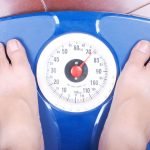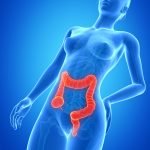Sarah A. LoBisco, ND
The toxicity of our world is one of many vital and pertinent issues that affect the health of the general population. It is a major contributor to the increasing stress, or allostatic load, of our patients and unfortunately is often overlooked as the main cause of or contributor to many diseases in general medicine.
As NDs and integrative healers scramble to keep up with today’s media and the age of the Internet, the unglamorous general recommendations of increasing water intake, exercising, and removing various negative impacts tend to be overshadowed by the latest “miracle cure.” The idea of detoxification and chelation seems to be conventionally ignored by many physicians probably because most are not confident about an effective solution. Still, as NDs with our roots in nature cure, we are at the forefront of access to ancient wisdom on how the gut’s detoxifying powers can provide solutions to the most complicated situations.
That said, to best serve our patients, it is imperative to keep an open mind and to continue to learn. This is especially true when categories of toxicity continue to increase dramatically and as new issues emerge with our modern lifestyle. As integrative medicine moves forward, we need to consider how the impact of today’s fast-paced society is affecting our patients and our practice.
For example, an environmental factor that most physicians may not consider is electromagnetic frequencies (EMFs). Evidence is continuing to be compiled on how this “dirty electricity” causes various negative effects on health. According to Dr Magda Havas,1 electromagnetic fields from cell phones and other technologies have been linked to various disorders and cancer risks.
Although the President’s Cancer Panel2 issued a health precaution for using cell phones in June 2010, the United States has not yet set an absolute warning to the public. This is despite a report by environmental researchers in 2008 on the probable link between cell phone use, leukemia, and various neurological issues.2 The lack of governmental warning may in part be because of poor study designs using “safety standards” that do not take into account the duration of use, nonthermal output, and proximity of the cell phone to the brain. Furthermore, funding has been lacking for nonbiased investigations that have no association with the telecommunications world.3
While it is true that the United States may remain undecided on this issue, various reports have raised concern among European populations. In fact, 11 years ago, the Stewart Report (http://www.iegmp.org.uk/report/text.htm), a comprehensive research document on dirty electricity, was released. The findings of this review convinced the United Kingdom to issue warnings to the general population concerning health risks involved with the use of cell phones. In 2008, European countries such as France, Russia, England, and India followed suit.4
For most NDs, concern over these technological advances is not surprising. Still, dependency on these technologies may tempt the most brilliant physician to silence his or her inner alarm bell of danger. However, you brilliant nature healers, it is time to look objectively at the evidence presented and to move forward with solutions of empowerment.
Some simple solutions for cell phone use are as follows: (1) Use texting or speakerphone instead of talking to put more distance between the EMF outputs and the brain. (2) Avoid placing a call when the phone’s signal is low to avoid increased EMF emission. (3) Graham-Stetzer products,5 which plug into outlets and filter the EMFs, can be used in some cases at home or at work. Still, a note of caution is needed surrounding this last solution. According to Oram Miller, BBEI,6 one’s home should be assessed for all forms of electricity before using this shielding device to avoid worsening of other existing electrical exposures. So, we may want to consider referring our extra-sensitive patients to a certified building biologist, who can assess our patients’ homes and provide more comprehensive solutions (http://www.createhealthyhomes.com).
As far as other environmental toxins, the list of detrimental chemicals continues to increase. The 2010 release of the Fourth National Report on Human Exposure to Environmental Chemicals by the Centers for Disease Control and Prevention7 provided a 529-page comprehensive data assessment on the burden of chemicals to the health of the US population. Among the chemicals included in the list were metals, herbicides, fungicides, polycyclic aromatic hydrocarbons, and parabens. For the first time in the CDC’s biannual 2-year report, 75 new chemicals were found in urine and serum samples of 2400 participants. New chemicals that were included in this compilation were acrylamide, arsenic, environmental phenols (including bisphenol A and triclosan), and perchlorateorate. The burden on our patients is likely extreme, as the National Health and Nutrition Examination Survey reported an estimated average of 212 chemicals in any one person’s blood or urine sample.7
This translates to an increasing burden on all the major organs of elimination, including lungs, kidneys, liver, colon, and skin. What is of more concern is that, as our population becomes sicker, they face greater exposure. Therefore, it is important that we protect ourselves and our patients from these factors as a form of preventive medicine. Here is where our nature roots can gleam: the often-criticized obsession with the gut may be our biggest tool to eradicate this major stressor in an overwhelmed population. A place to start is where most major detoxification occurs, the liver.
As we know, the liver is responsible not only for detoxifying harmful substances but also for cleansing the body of old red blood cells, converting ammonia to urea for excretion, and breaking down hormones. The liver is also involved in amino acid synthesis of proteins, formation of bile, and metabolism of carbohydrate, protein, and lipids, as well as synthesis of platelets, blood clotting factors, and angiotensinogen hormone. Furthermore, the liver stores glucose, vitamin A, vitamin D, vitamin B12, iron, and copper.8 For those with compromised liver function already, the added burden of this excessive amount of toxins must be considered in our detoxifying protocols.
As holistic practitioners, functional medicine and good detective work will tell us when to use powerful detoxifying tools in our chemically sensitive patients who tend to have chronic recurring symptoms. These patients are “canaries in the coal mine,” our select population who have been told they have made up their own disease and who say we are the only ones who will listen. They may actually be here as a warning for us to wake up and pay attention to the environment. We can provide relief to them with the reassurance that their sensitivity is not a psychological defect but can be attributed to an alteration in their genetic makeup for detoxification. This proof can be found by testing for single-nucleotide polymorphisms, or SNPs, in phase 1 and phase 2 detoxification of the liver. Recently, Robert Rountree, MD,9 brought this point home when he expressed how the previously dismissed psychosomatic cases are the new “SNP patients” of this century.
Because many symptoms of toxic effects such as headache, abdominal pain, and constipation are vague, it is hard to pinpoint if toxicity is the main culprit in a patient’s total load. My rule of thumb has been to implement a more thorough history and to administer a questionnaire on environmental exposure. In New York State, it is hard to obtain specific genome testing for a licensed ND, but if a patient is not responding or is overresponding to treatment, it is usually proven that environmental toxicity is playing a major part.
When testing for heavy metals, it is important to keep in mind that the means of testing is still the subject of controversy in conventional and integrative medicine. How to assess and what to use for detoxification are commonly heated debates among even chelation specialists. For example, lead can be stored in the bones, and a special measuring device may be needed because serum tests may not accurately reflect levels.10 Furthermore, although hair provides a good baseline of exposure in the past 3 months, it may not reflect body stores.11 Here, the important points to keep in mind are if you helping your patient and whether his or her quality of life is improving.
I have established a referral to a specialist who will detoxify and chelate using dimethyl sulfoxide when I believe I have gotten my patient strong enough to handle the procedure and more is needed. For some of my nonresponding patients, I know it is in their best interest to undergo chelation or to be referred to someone who has more experience in this specialty. In a telephone conversation with a chelation specialist in October 2010, Isadora Guggenheim, ND, MS (http://www.secondnaturecare.com) stressed the importance of additional testing for chemically sensitive patients. The following tests act as guides for further assessment of additional burdens of comorbid stressors: heavy metals, neurotransmitters, SNPs, stool analysis for microbes and parasites, and viral loads (herpes simplex virus, Epstein-Barr virus, Coxsackie B virus, and Lyme disease and coinfections).
Thankfully, most patients do not harbor detoxification SNPs or have not been exposed to the point where they will require chelation removal for detoxification. For these hardy types, detoxification support through nutrients and plant medicine can produce powerful additive effects in any treatment protocol. Within this approach, biochemistry knowledge and the effects of certain nutrients on the 2 phases of liver detoxification are important to consider.
For example, B vitamins, glutathione, and branched-chain amino acids are needed as cofactors for the 10 CYP450 phase 1 enzymes. They provide the raw material to convert various toxins (such as xenobiotics, microbe toxins, pollutants, pharmaceuticals, and steroid hormones) to their intermediary metabolites; however, during this functionalization reaction with oxygen, reactive oxygen species can be formed. These free radicals can cause damage to DNA and various proteins in the body; therefore, antioxidants are needed for protection. Helpful antioxidants include vitamin C, oligomeric procyanthocyanidins, and coenzyme Q10.
In phase 2 of liver detoxification, nutrients are used to conjugate these intermediates into a water-soluble form to be excreted via the bile through feces or into serum through the kidneys. Amino acids such as taurine, glycine, arginine, orthinine, and glutamine can be used for amino acid conjugation. Acetylcysteine, cysteine, and methionine can be used for glutathione conjugation. Furthermore, substances such as sulforphane can be used for sulfation, and other natural substances can induce glucoridination, acetylation, and methylation.
Various factors, besides SNPs and nutrients, can be assessed to better assist our patients with detoxification. These include sex, age, environment, dietary factors, and lifestyle factors and habits. For example, smoking induces CYP1A2, forming more toxic phase 1 intermediates and less protective phase 2 reactions. Therefore, substances such as ellagic acid that induce phase 2 liver detoxification or inhibit phase 1 detoxification should be considered for our smoking population. Furthermore, women who are already experiencing hormonal issues can decrease the burden of the liver’s catechol-O-methyl-transferase pathway for hormonal and catecholamine metabolism by using methylating factors such as S-adenosylmethionine.
Another tool that is helpful in clinical practice is a comprehensive drug metabolizer reference sheet. This tool will help assess which SNPs can cause our patients to be more responsive or more at risk to certain adverse effects of medications. Furthermore, the pathway of drug clearance will give information regarding effective supplements to induce or inhibit certain detoxification pathways.9,11,12
A supplement that I recommend to most patients is a phase 2 inducer. As a neutraceutical or a whole food complex from Brassicaceae plants, diindolylmethane helps upregulate phase 2 detoxification. This also provides antioxidants that protect the body from phase 1 intermediates.13-15 The following abstract from Phytotherapy Review highlights this effect:
Broccoli contains many bioactives, including vitamins C and E, quercetin and kaempferol glycosides and, like other members of the Brassicaceae, several glucosinolates, including glucobrassicin (3-indolylmethyl glucosinolate) and glucoraphanin (4-methylsulphinylbutyl glucosinolate). A key bioactive component responsible for much of this activity may be sulforaphane (1-isothiocyanato-4-methylsulfinylbutane), a hydrolysis product of glucoraphanin. Sulforaphane not only upregulates a number of phase II detoxification enzymes involved in clearance of chemical carcinogens and reactive oxygen species, but has anti-tumorigenic properties, causing cell cycle arrest and apoptosis of cancer cells.16(p283)
Basic nutrients have been studied for their effect on heavy metals in blood serum, although the information is conflicting. In the case of lead, evidence shows that vitamin C may reduce circulating blood values. The following summary about vitamin C for those with elevated blood levels of lead (EBLLs) is from the Centers for Disease Control and Prevention (CDC):
In summary, although there is fairly strong evidence to support giving vitamin C to adults with EBLLs, there is insufficient evidence to recommend for or against vitamin C supplementation for children with EBLLs. It is important to note that CDC recommends giving all children 6 months and older at least two servings of foods rich in vitamin C per day for the prevention of iron deficiency.17
One last point to consider is removal of the obstacles to cure that are more in our patients’ control. Substances that are harmful to the body such as excess alcohol, drugs, and processed foods should be avoided. In fact, high-fructose corn syrup, present in most processed foods, has been linked to liver disease. An article in the journal Hepatology concluded that fructose consumption is associated with fibrosis, increased triglycerides and cholesterol levels, and decreased high-density lipoprotein cholesterol levels in those with nonalcoholic fatty liver disease.18 This information entered mainstream awareness when CBS television aired a special report on the findings of various studies connecting the negative impact of high-fructose corn syrup to various disease risk factors.19
There are several thoughts to consider for setting your patients up for success. As clinicians, we should keep in mind that, although it is easy to tell someone to stop a behavior, in reality the cycle of food addiction can be hard to break. Dr Amen’s book Change Your Brain, Change Your Body20 explains how various addictive patterns are associated with different neurotransmitter imbalances in the brain. When our patients’ neurotransmitters are imbalanced, it is harder for them to follow through with dietary recommendations and lifestyle changes. For example, those who crave carbohydrates and sugar could have overactivity in their prefrontal cortex and be deficient in serotonin. Those with impulsive eating patterns might have underactive basal ganglia and may be lacking the stimulant neurotransmitter dopamine.
To find out which part of the brain is trumping success for weight loss and detoxification, I like to order urinary metabolite panels to complement a thorough case history. Organic and amino acid panels, detoxification markers, and energy metabolites can provide additional markers for healthy brain balance.
Because these neurotransmitters are produced mostly in our gut and because the microbial balance is also important for detoxification (via antiporters and enterohepatic circulation),12 the following can be helpful tools as the milieu of the gut is being reestablished: l-theanine for blunting excess catecholamine output, 5-hydroxytryptophan for low serotonin, inositol for adrenal stress and low -aminobutyric acid, and therapeutic essential oils such as citrus blends. The clinical correlation for improved focus with the use of l-theanine among my clients with hypothyroidism has been remarkable.
A simple blend of free-form amino acids, B vitamins, and vitamin C is a good baseline for neurotransmitter, detoxification, and adrenal supplementation. This supports the body, while addressing issues that coincide. For women whose hormones interact with neurotransmitter, diindolylmethane and cruciferous vegetables can be used as a means of preventing hormonal imbalances and decreasing cancer risk in the future.13-15
It is important to remember that a big obstacle to our patients’ cure is the toxic world we live in. Paramount in restoring health and harmony to their lives is providing them with knowledge about how to protect themselves from dirty electricity, how to supplement their liver and digestive health, and how to obtain baseline nutrients so that they are able to follow through with the suggestions we offer and be “good patients.”
My clients practically quote me when they realize they are beating themselves up after countless mind-body techniques and diets have failed: “I know, Dr Sarah; biochemistry will trump willpower every time!”
Blaming patients for not being able to stop an addiction ignores that brain biochemistry is preventing them from doing what they want to do to please you and creates a vicious cycle of self-deprecation on the part of the patient and frustration for the practitioner. Eventually, the increase in serotonin from meditation and exercise will replace the need for 5-hydroxytryptophan in most patients. But what if they will not even start the recommendations because their serotonin and gut have been in shock from years of Chunky Monkey Ben & Jerry’s? A thought to munch on.
 Sarah LoBisco, ND is a graduate of the UBCNM in Bridgeport, CT. She is licensed in Vermont State and holds a BA in psychology from SUNY Geneseo. She is a contributing item writer for the CNME and has had several articles published. Dr. LoBisco is also a speaker on integrative medical topics for medical professionals. Recently, she completed the Applied Functional Medicine in Clinical Practice coursework, which is accredited by the Accreditation Council for Continuing Medical Education (ACCME)
Sarah LoBisco, ND is a graduate of the UBCNM in Bridgeport, CT. She is licensed in Vermont State and holds a BA in psychology from SUNY Geneseo. She is a contributing item writer for the CNME and has had several articles published. Dr. LoBisco is also a speaker on integrative medical topics for medical professionals. Recently, she completed the Applied Functional Medicine in Clinical Practice coursework, which is accredited by the Accreditation Council for Continuing Medical Education (ACCME)
References
1. Institute for Functional Medicine. Dr Magda Havas, FMI talks by topics lecture. Gig Harbor, WA. November 2010. http://www.functionalmedicine.org. Accessed November 19, 2010.
2. ElectromagneticHealth.org. President’s Cancer Panel Recommends Precaution with Cell Phones and Wireless Technologies. http://electromagnetichealth.org/electromagnetic-health-blog/presidents-cancer-panel-recommends-precaution-with-cell-phones-and-wireless-technologies/. Accessed March 2010.
3. Independent Expert Group on Mobile Phones. Mobile phones and health. http://www.iegmp.org.uk/report/text.htm. Accessed November 2, 2010.
4. Carpenter DO, Sage C. Setting prudent public health policy for electromagnetic field exposures. Rev Environ Health. 2008;23(2):91-117.
5. Graham-Stetzer Products. Dirty electricity. http://www.dirtyelectricity.ca/stetzer_filters.htm. Accessed November 2, 2010.
6. Designs for Health. Oram Miller, DFH clinical rounds teleseminar. October 2010. http://www.designsforhealth.com. Accessed November 19, 2010.
7. Centers for Disease Control and Prevention, Department of Health and Human Services. Fourth National Report on Human Exposure to Environmental Chemicals. 2010. http://www.cdc.gov/exposurereport/. Accessed March 2010.
8. Wikipedia. Liver. Updated November 1, 2010. http://en.wikipedia.org/wiki/Liver. Accessed November 1, 2010.
9. Rountree R. Toxicity and biotransformation. Presented at: Applying Functional Medicine in Clinical Practice; September 2010; Portland, OR. Institute for Functional Medicine.
10. Bone Lead Test Facility at Mount Sinai. Todd A. X-ray fluorescence bone lead testing facility. http://research.mssm.edu/xrf/. Accessed November 2010.
11. Cline J. Assessing toxic overload and impaired biotransformation. Presented at: Applying Functional Medicine in Clinical Practice; September 2010; Portland, OR. Institute for Functional Medicine.
12. Liska DJ. The detoxification enzyme systems. Altern Med Rev. 1998;3(3):187-198. http://www.adltests.com/assets/files/pdf/Liver_Detoxification_Review_Liska.pdf. Accessed November 10, 2010.
13. Son TG, Camandola S, Mattson MP. Hormetic dietary phytochemicals. Neuromolecular Med. 2008;10(4):236-246.
14. Munday R, Munday CM. Induction of phase II detoxification enzymes in rats by plant-derived isothiocyanates: comparison of allyl isothiocyanate with sulforaphane and related compounds. J Agric Food Chem. 2004;52(7):1867-1871.
15. Shapiro TA, Fahey JW, Wade KL, Stephenson KK, Talalay P. Chemoprotective glucosinolates and isothiocyanates of broccoli sprouts: metabolism and excretion in humans. Cancer Epidemiol Biomarkers Prev. 2001;10(5):501-508.
16. Jeffery EH, Marcela A. Physiological effects of broccoli consumption. Phytochemistry Rev. 2009;8(1):283-298. http://cat.inist.fr/?aModele=afficheN&cpsidt=20925882. Accessed March 2010.
17. Centers for Disease Control and Prevention, Department of Health and Human Services. Managing elevated blood lead levels among young children: recommendations from the Advisory Committee on Childhood Lead Poisoning Prevention. http://www.cdc.gov/nceh/lead/casemanagement/casemanage_chap4.htm. Accessed November 9, 2010.
18. Abdelmalek MF, Suzuki A, Guy C, Unalp-Arida A, Colvin R, Johnson RJ, Diehl AM. Increased fructose consumption is associated with fibrosis severity in patients with nonalcoholic fatty liver disease. Hepatology. 2010;51:1961-1971.
19. CBS.ca Player. Corn syrup concerns: study: high fructose corn syrup can harm the liver. CBS news report. March 18, 2010. http://www.cbc.ca/video/player.html?category=News&clipid=1444422465. Accessed November 19, 2010.
20. Amen DG. Change Your Brain, Change Your Body. New York, NY: Crown Publishing Group; 2010.
Naturopathic Doctor News and Review | NDNR
You can’t always protect your clients from environmental toxins. But you can recommend products that may help bolster their bodies’ own natural detoxification processes. From liver and colon cleanses to proprietary detox supplements, DrNatura.com offers a full range of all natural products for increased health and wellness.





